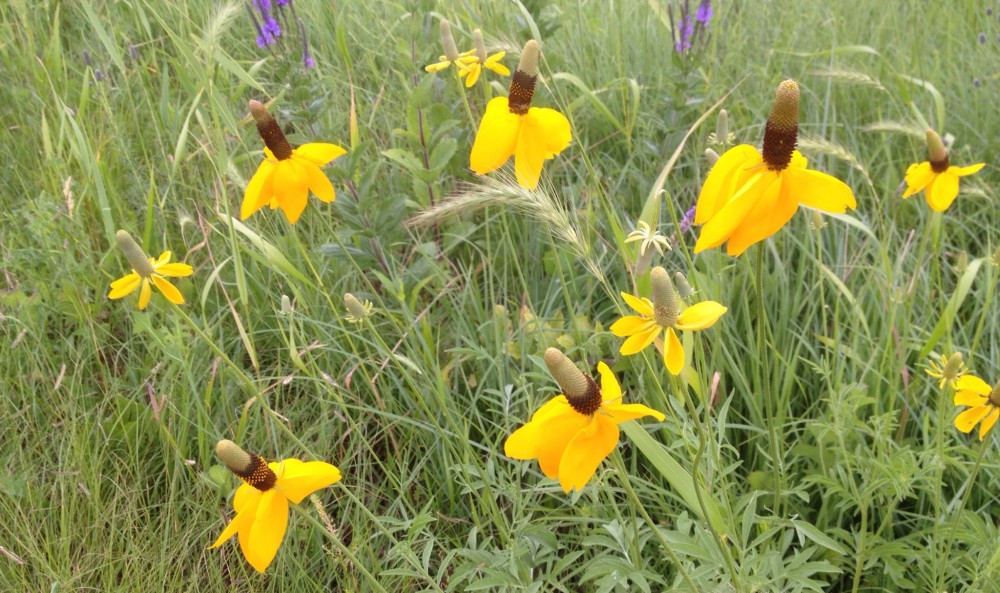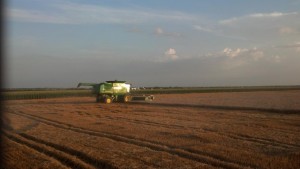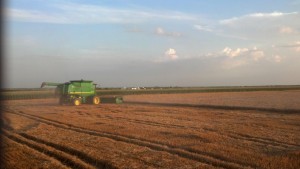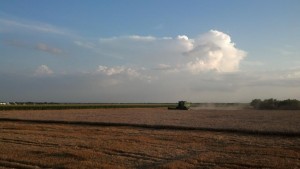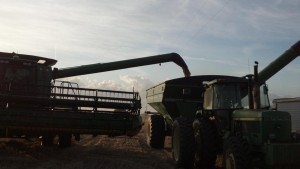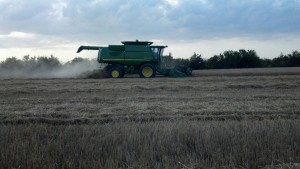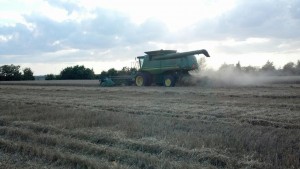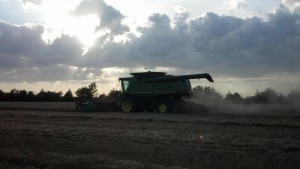The winter wheat is late this year. In fact, the farmers of central Texas are just now harvesting the golden fields of grain, and we are only ten days from the first day of summer.
Why do they call it winter wheat?
Now, that is a very good question. In this part of Texas – down from Dallas/Fort Worth through Abbot, West and Penelope to Waco, the farmers planted the seeds for the current crop back in November of last year — 2012. Remember, fall of 2012 started on September 22, 2012, and our past winter started on December 21, 2013. So, the wheat seed was planted in the fall, but it’s not called fall wheat.
I just talked to Uncle Joe down on the farm and asked when he planted his winter wheat. The response was November 26, 2012. I asked Joe what he was doing today, and he said he was harvesting winter wheat. Hmmmm, I thought, and inquired, “When would you normally harvest the wheat?” “About May 15th to the 25th,” was Uncle Joe’s answer.
Folks, this winter wheat harvest in Texas is about a month late, just making it in before the end-of-spring line, which is June 20, 2013, and nudging right up there to summer, which begins June 21, 2013. It may be that some farmers will be harvesting winter wheat in the good old summertime — after June 21st.
I asked Uncle Joe why the wheat was late growing this year. “It didn’t rain until Christmas,” was the ready explanation.
With no rain, it appears the wheat seeds rested and enjoyed the Holiday lights, waiting for a Christmas Day gift of moisture falling from above, before germinating and breaking the surface of the dark plowed ground.
“But, why do they call it winter wheat?” I asked Uncle Joe, remembering the reason I’d called.
“Because our wheat grows in the winter,” I heard over my cell phone. “Wheat up Kansas way, as far south as Oklahoma, is planted later because of the cold. That wheat comes up in the spring. They call it spring wheat, because it grows in the spring. Our winters are milder in Texas, so we can plant in the fall and the wheat grows in the winter – winter wheat.”
Makes sense.
“What you using to harvest the wheat?” I asked.
“A combine with a platform head and reel,” Uncle Joe answered, matter-of-factly.
“And, how’s the yield look?” I was curious, what with late rains and a late harvest.
“In an average year,” Uncle Joe began, always careful not to answer a question too directly, without some background information and time for thought. “In a good year, we’ll average about 50 bushels.”
“That’s per acre, right?”
“Right . . . per acre.”
“And . . . how’s it looking this year?” I was getting curious.”
“Pretty good, I’d say.”
“About how good?” The suspense was getting to me.
“Most is coming in at . . . or above . . . say . . . 60 . . . some up to 80.”
“Wow, Joe, 60-80 bushels per acre for winter wheat. I mean, that’s great.”
“Not bad. Would you like me to send you some pictures of the harvest?”
“Sure, Joe. I’ll put ‘em in the blog post.”
* * *
Check back later. When I get those winter wheat pictures, I’ll post them right here.
It may take a while. Uncle Joe’s out there right now bringing home the harvest.
Now, that’s got a right nice ring to it, wouldn’t you say?
* * *
For your perusal and enjoyment, here are the pictures from Uncle Joe of the ongoing winter wheat harvest.
I call this first one “golden wheat at evening with the combine working and the corn stalks beyond tasseling.” It sure looks like that corn is making for a fine harvest of its own.
See the sun catching Uncle Joe or Brother Charles (can’t tell who is driving) right in the eye. I think that far-off corn is growing as we watch.
It looks to me like that combine below is heading back to the road to lighten all that grain it’s hauling.
Sure enough, I see Brother Charles off-loading those wheat kernels in a golden stream to the waiting grain wagon. It doesn’t seem these farmers are stopping for dark. The shadows are lengthening.
After a gulp of Gatorade and half a sandwich, they’re back at it. You can see the wheat straw left behind by the combine. That straw can be raked and baled for cattle feed. Down at the farm, pretty much everything goes to some use. It’s that way in the country — always has been.
Below, Charles has made the turn for another cut and glean. A word about that turn. The entire field is mapped by a Global Positioning System (GPS). Uncle Joe installed a tower back by the cow barn. The satellites in space talk to the combine’s onboard computer through that tower. When the turn is made, the computer processes the GPS information and aligns the combine for the next cut. Day or night, the combine can roll and the harvest continue.
And, night it is getting to be. But, the combine keeps cutting, the wheat keeps piling and the farmers keep working. It’s that way at harvest time. And, I’m glad it is. So, we can wake up to that bowl of cereal and just keep eating.
Right nice of them, don’t you think?
Grandpa Jim
